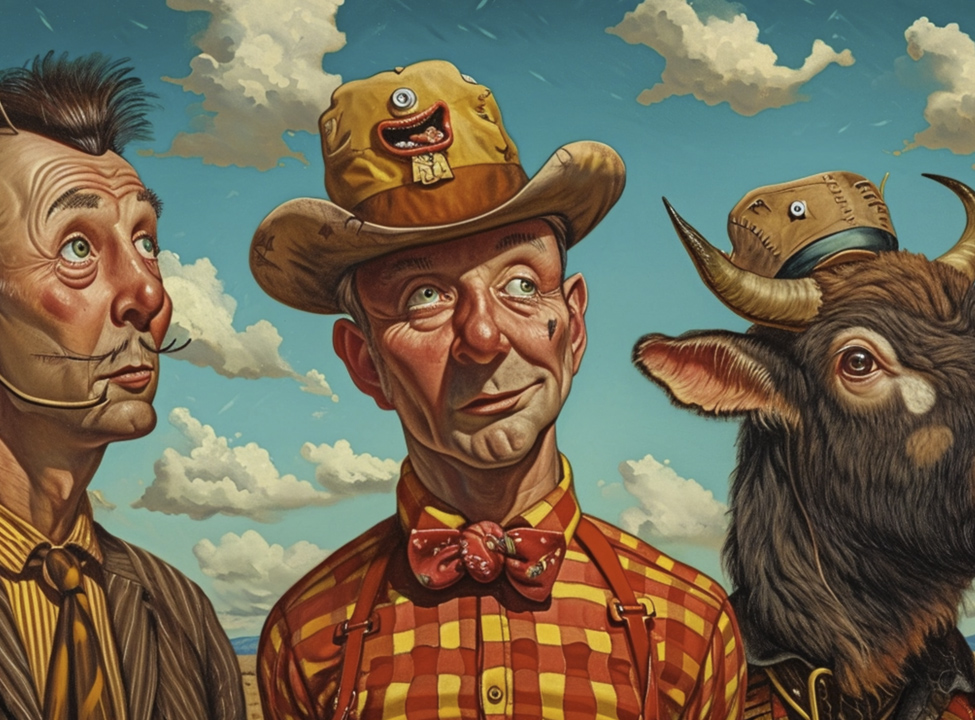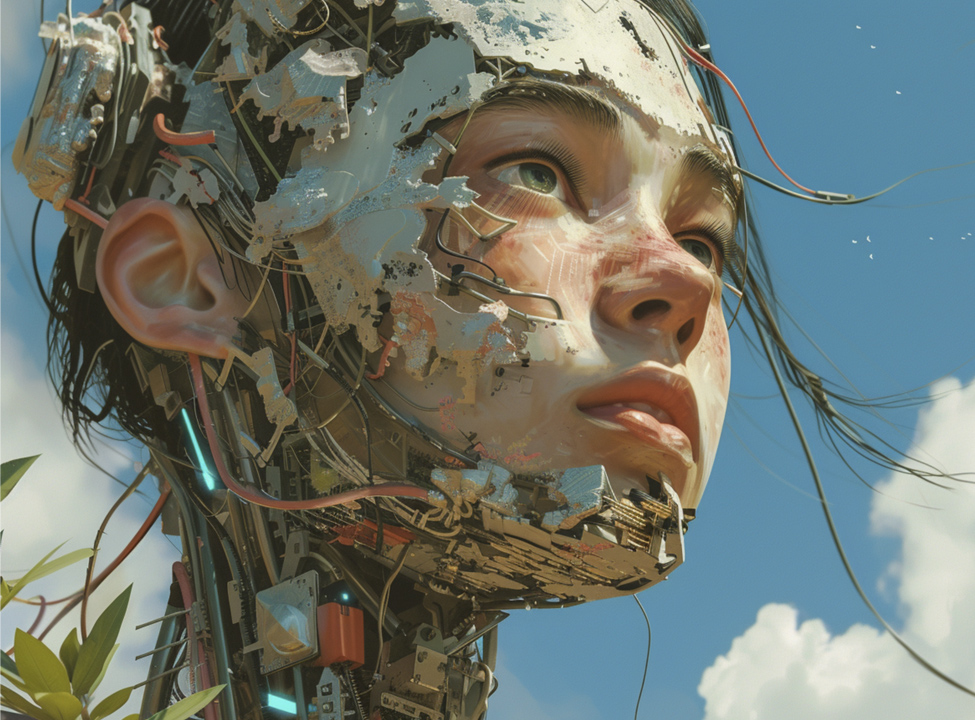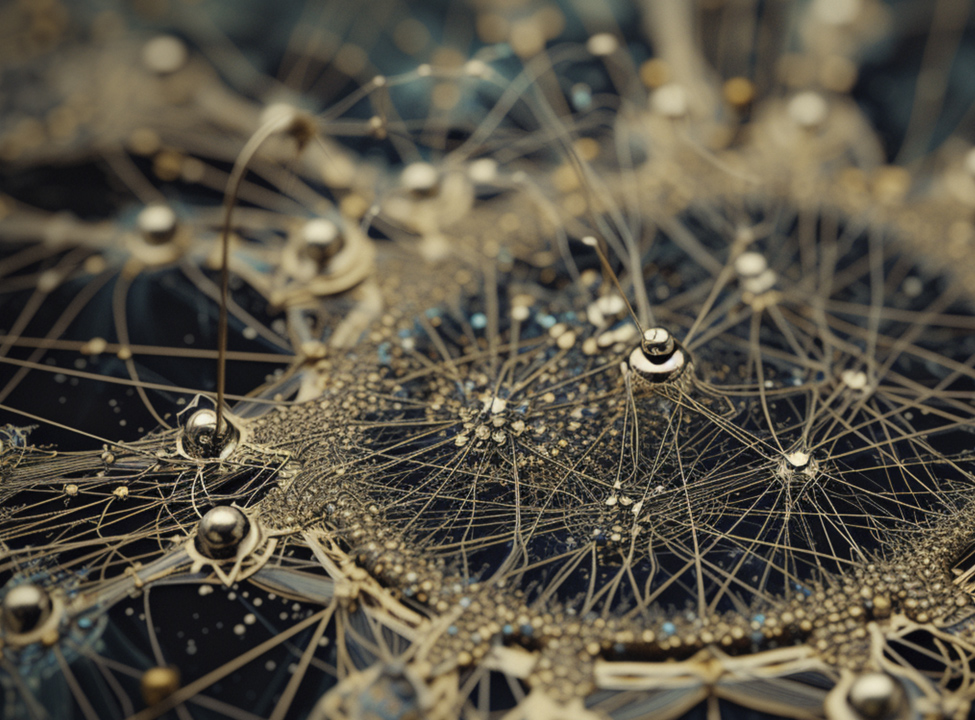How many opportunities have you missed because you just weren’t paying attention? I’m sure I’ve missed plenty.
Imagine, for example, if you had lived in 15th-century Germany when Gutenberg introduced the first movable-type printing press. What impact might it have had on your life and the lives of those around you if you had understood the significance of that event? Could you have played a special role in furthering its development?
What if you had been there during the birth of self-propelled vehicles, moving pictures, or wireless communications and understood their significance?
I’ve been there. In the early 1970s, I was lucky enough to witness the rise of the personal computer and, shortly thereafter, the World Wide Web. I had a stack of floppy disks and logged onto the Internet using a modem. I worked with a company that helped IBM market the precursor to e-commerce and collaborated with others to create some of the first digital “clip art.” I attended the big computer hardware and software expos and used the first versions of DOS, Macintosh “System 1,” and Windows. Later, in the 1990s, I started ideabook.com, where I blogged about what was happening in the design and marketing industries and wrote books and magazine articles on “desktop publishing.”
It was a blast, but I still kick myself for not fully appreciating what was happening around me.
I tell you that to tell you this:
Today, something even more profound is happening: the rise of a new way of thinking and creating—Artificial Intelligence (AI).
If you are not already keenly aware of what is happening, I cannot overemphasize the importance of getting up to speed.
There are many applications of AI, but for now, let’s focus on OpenAI’s ChatGPT, a sophisticated AI model that you “prompt” to produce text and images that appear as if a human created them.
AI models like this have never existed before.
To me, using ChatGPT is like having two brains. The first, of course, is the brain I was born with—the God-given gift we use to generate our own array of thoughts, feelings, and behaviors.
ChatGPT (and models like it) acts as a kind of “second brain”—one that I can prompt in ways similar to how I think my own thoughts. Except, in this case, I generate the thoughts by writing them out in the form of directions and questions (prompts).
The quantum leap is that my second brain is not limited to what I know; my second brain draws on what it has been “trained” on—in the case of ChatGPT, a wide-ranging compilation of human knowledge, including libraries, databases, and websites that delve deeply into just about any subject you can think of, from physics, computer science, and mathematics to aesthetics, religion, and philosophy.
And it can access all that information and produce cogent responses in the blink of an eye.
One more important distinction: Even if you and I enter the same prompt, ChatGPT’s response will typically differ. One of its foundational principles is to produce a range of possibilities or perspectives on any given topic and express them in words and pictures that are unique to each user.
EVERYONE needs to understand this phenomenon.
You and I will soon be living in a world where many of the people around us are using these extraordinarily powerful tools in their work and everyday interactions.
You will no longer need to be a writer to write, an illustrator to illustrate, or an expert to navigate complex subjects. Though you’ll still need to be motivated, knowledgeable, and creative—AI will require a new set of talents based on your ability to control and orchestrate its thinking.
The more you are able to communicate your beliefs, your interests, and your style to ChatGPT, the more its responses will align with them. In other words, you are in charge of what it produces. You can push back on it, challenge it, tell it to “continue,” “restate,” “dig deeper,” or even prompt it like this: “Edit this for spelling, grammar, voice, and tense, but don’t water down the point of view.”
And these are just the early days of AI. Models like ChatGPT are continually “trained” using a process “based on a machine learning method called unsupervised learning, specifically using a variant of the transformer architecture known as the Generative Pretrained Transformer (GPT).” The changes will be profound—and I’m guessing they will happen very quickly.
Some examples of how you can use it today.
- To tutor you on virtually any subject.
- To generate articles, stories, and social media content.
- To debug and suggest improvements for coding.
- To learn languages and practice conversation and grammar.
- To draft and edit emails, reports, and proposals.
- To translate texts and enhance voice-to-text.
- To generate insights on trends and strategies for business analysis.
- To offer preliminary advice on legal and medical topics.
- To explain complex issues.
- To explore theories in philosophical discussions.
In recent weeks, ChatGPT has added image generation and analysis capabilities. Now you can ask it:
- To generate unique images, illustrations, or artworks.
- To create educational diagrams and charts.
- To experiment with artistic styles and themes.
- To turn abstract data or concepts into understandable visuals.
- To create conceptual visuals for architectural designs.
- To design custom graphics for personalized gifts and merchandise.
- To generate visual mockups for apps, websites, or print materials.
- To visualize historical events, cultures, or extinct species.
- To illustrate articles, books, or research papers.
- To develop advertising and marketing campaigns.
What’s coming?
I asked ChatGPT, “What are some fundamental changes we can expect AI to make in the next 10 years?” Here is its response:
“Enhanced Automation Across Industries: The capacity of AI for automation will continue to revolutionize industries by streamlining processes and augmenting human capabilities. This will affect sectors from manufacturing and logistics to healthcare and finance, optimizing efficiency and productivity.
Personalized Experiences: Through analyzing vast amounts of data, AI will increasingly offer personalized experiences in e-commerce, entertainment, and education, enhancing user satisfaction and engagement.
Advancements in Healthcare: AI will significantly impact healthcare delivery, including diagnosis, treatment, and drug discovery, leading to early disease detection, personalized treatments, and improved patient outcomes.
Ethical Considerations and Regulation: The growth of AI necessitates addressing ethical issues and creating regulatory frameworks, focusing on bias, privacy, and accountability to ensure responsible development and deployment.
Rise of AI-driven Creativity: AI will complement and inspire human creativity, empowering artists, designers, and writers to explore new avenues of expression.
Workforce Transformation: The integration of AI into the workforce will highlight the need for reskilling and emphasize human-centric tasks, such as problem-solving and emotional intelligence.
Global Socioeconomic Impacts: AI’s influence will shape global dynamics, from workforce displacement to environmental sustainability, requiring strategies for equitable development.”
The challenges
While AI presents exciting opportunities, it also poses significant challenges. Addressing these will be crucial in the next decade:
Here’s what ChatGPT tells me about the potential disruptions:
“Economic Disruption: AI’s potential for job displacement and industry reshaping highlights the need for workforce development and new economic models to ensure inclusive growth.
Social Disruption: The adoption of AI could widen social inequalities and raise concerns over privacy and bias, necessitating transparent governance and equitable access to technology.
Cultural Disruption: As AI integrates into creative sectors, it challenges notions of authenticity and human authorship, calling for a balance between innovation and the preservation of cultural integrity.
Environmental Disruption: The environmental impact of AI, from resource use to carbon emissions, requires eco-friendly solutions and responsible consumption practices.
Geopolitical Disruption: Competition for AI dominance may heighten global tensions, underscoring the importance of international cooperation and governance norms.”
The philosophical challenges.
One concern I have about artificial intelligence (AI) is that it is based on the idea that there are no absolute truths, especially in fields involving philosophy, ethics, and religion—a philosophy referred to as “relativism.”
Why is this problematic? Because all human beings adhere to some framework of absolute truth, even if their absolute truths revolve around the belief that no absolute truths exist.
The problem becomes apparent when directing AI models to address issues that encompass such truths. At that point, a model like ChatGPT will either choose the truths it has been trained to adopt by its programmers and educators, or it will dilute its responses to avoid committing to a specific stance, in an effort to eliminate the possibility of offending anyone.
The reality is, companies developing AI are not excluding absolute truths from their model designs; they are deciding which absolute truths they agree with and are building their models around them. This approach mirrors what Google did with search, where the individuals making early-stage decisions on how to address these issues wield enormous power.
Currently, the only known method to counteract the philosophical biases built into any AI model is to articulate your beliefs and opinions in your prompts and to insist the model conforms to them.
Clearly, we are not there yet.
Additionally, these philosophical challenges are compounded by three more issues:
First, as of this writing, ChatGPT’s knowledge base is capped at April 2023, rendering it less helpful for tasks requiring up-to-date information.
Second, the accuracy and breadth of its responses are directly tied to the quality and diversity of the data it has been trained on. Thus, if it hasn’t been trained on the information you’re seeking, the response may be inadequate or incomplete.
Third, “hallucination” is the term used to describe instances when an AI language model generates text to fill in gaps in its knowledge with plausible-sounding, yet inaccurate information. In other words, be wary, at times, AI just makes stuff up.
Questions you should be asking.
As we explore these new tools, we need to ask some important questions. ChatGPT itself suggests we work to answer the following:
“What are the ethical implications of AI development? This encompasses concerns about privacy, surveillance, data security, and the potential for AI to be used in ways that could harm individuals or society.
How can we ensure AI fairness and avoid bias? Given that AI systems learn from data, how do we prevent these systems from perpetuating or amplifying existing biases and inequalities?
What are the potential impacts of AI on employment and the workforce? As AI automates tasks, which jobs are at risk, and what new roles might emerge? How do we prepare the workforce for these changes?
How can AI be made transparent and explainable? Can users understand how AI systems make decisions, especially in critical areas like healthcare, finance, and criminal justice?
What regulatory frameworks are needed to manage AI’s development and deployment? How do governments and international bodies oversee AI to ensure it benefits society while minimizing risks?
What are the long-term societal impacts of AI? Beyond immediate technological and economic impacts, how might AI influence social structures, human behavior, and our understanding of intelligence?
How can AI contribute to solving global challenges? How can we harness AI to address critical issues such as climate change, healthcare, and global inequality?
What is the role of human oversight in AI decisions? In what situations should AI decision-making be augmented or overridden by human judgment, especially in high-stakes scenarios?”
To these ends, just one year ago, in March of 2023, many of the people heading up efforts in AI called on all AI labs “to immediately pause for at least 6 months the training of AI systems more powerful than GPT-4” (see a link to their letter at the bottom of this page).
What’s the next step?
As I mentioned at the outset, I believe AI offers some unprecedented opportunities. If you want to experience some of what led me to write this post, I recommend starting with OpenAI’s ChatGPT. I have experimented with Google’s Gemini and, as of this writing, believe it pales in comparison.
For image generation, ChatGPT offers some impressive tools, but MidJourney, a dedicated image generation platform, provides even more control over the results.
By the way, I used AI to write parts of this post and to proofread it, checking the grammar, punctuation, and so on. Its efforts are so intertwined with my own that I can’t discern who wrote what. Suffice it to say, though the article reflects my thinking and approach (my brain), I can’t take full credit for the end result (ChatGPT’s brain).
So far, I choose to remain optimistic.
As you become more aware of the subject, you’re going to encounter the notion that some folks believe, in the not-too-distant future, AI could begin directing itself—exploring thoughts without human direction.
The best possible outcome? If that were to happen, my hope is that there is something spiritual at play. That AI might ultimately reveal the complexity, beauty, and truth of our universe and lead us to a deeper understanding and appreciation of creation and our Creator, the Christian God.
I hope you’ll join the conversation and share your thoughts below.
In March of 2024, we can be certain about this: We are witness to a sea change in human life—how we go about accessing, processing, and applying knowledge.
My prompt to you is: What will you do because of it?
Some AI related links:
Matt Wolfe’s Future Tools will keep you posted on AI developments…
Prompts Daily is another excellent AI news resource…
A guide to strategies and tactics for getting better results from large language models:
In March of 2023 some of the people heading up efforts in AI called on all AI labs “to immediately pause for at least 6 months the training of AI systems more powerful than GPT-4”. Here’s an explanation and their letter:
Pause Giant AI Experiments: An Open Letter…
Geoffrey Hinton talks about about the impact and potential of AI:
Examples of images created using MidJourney:












Posted in FEBRUARY 2024 / Chuck Green is a designer and author of books published by Random House, Peachpit Press, and Rockport Publishers. All rights reserved. Copyright 2007-2024 Chuck Green. Contact.




Thoughts?